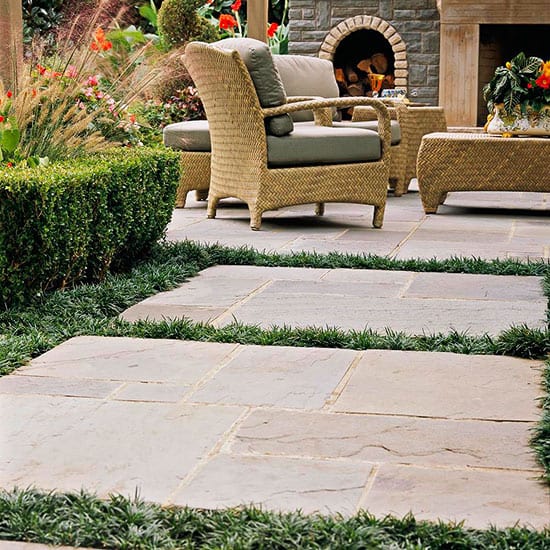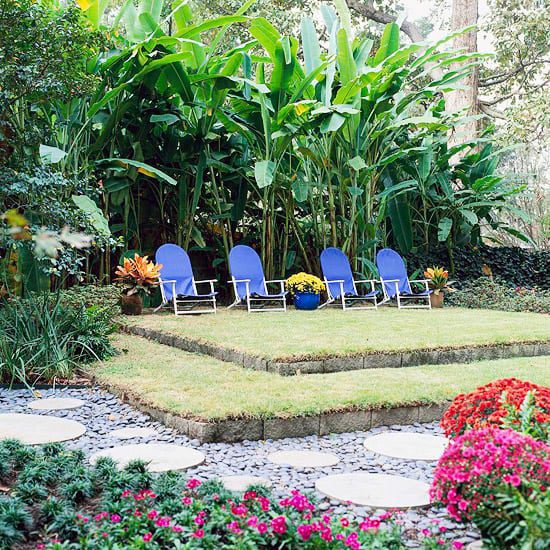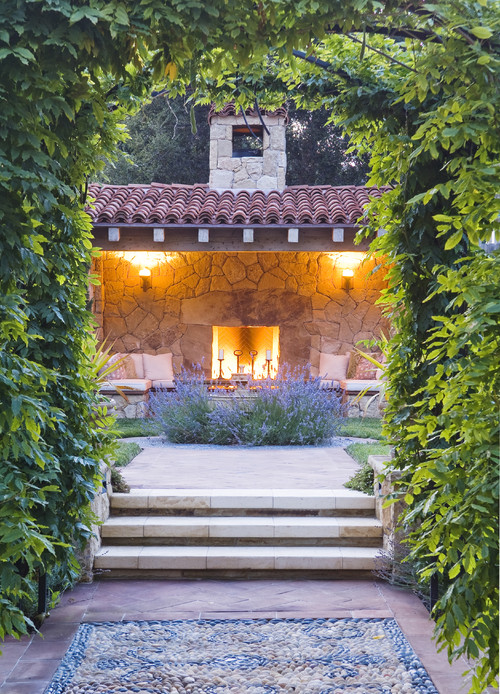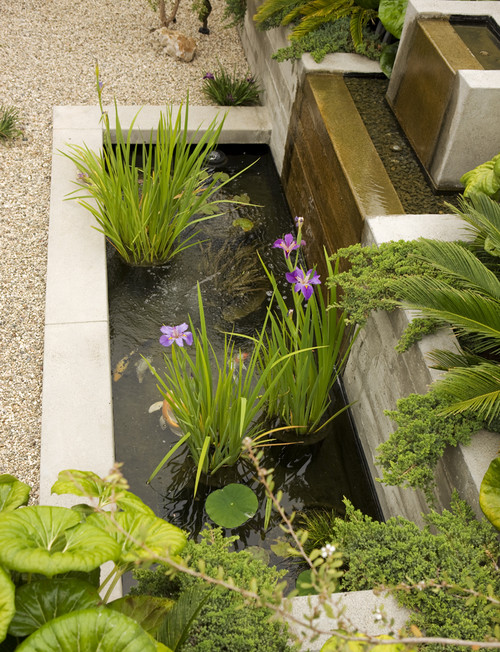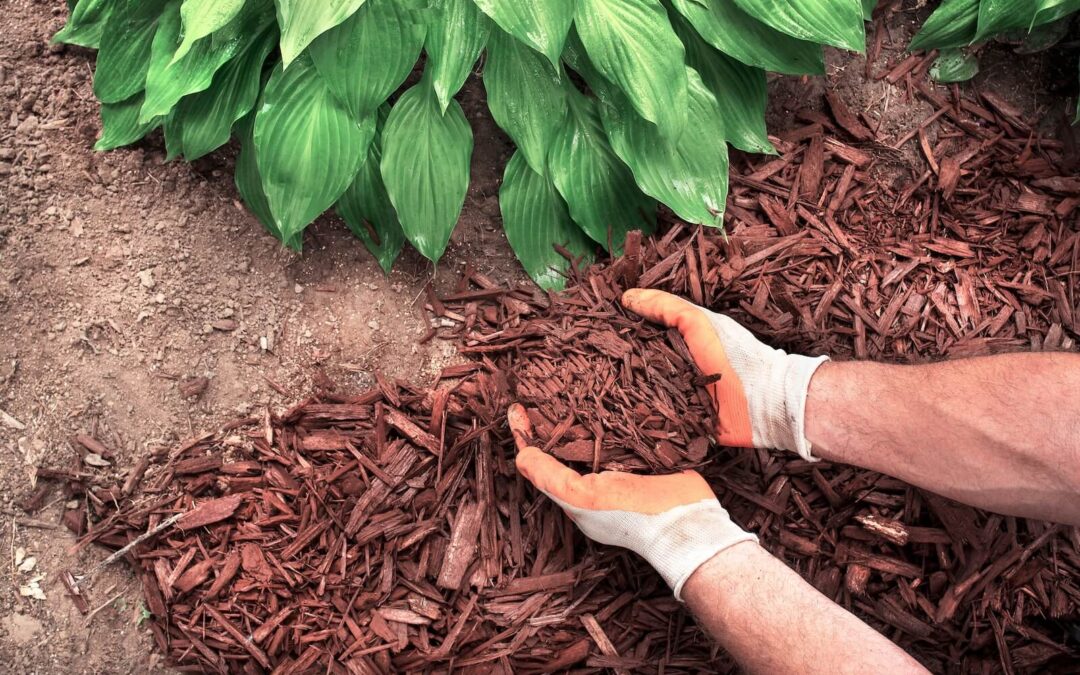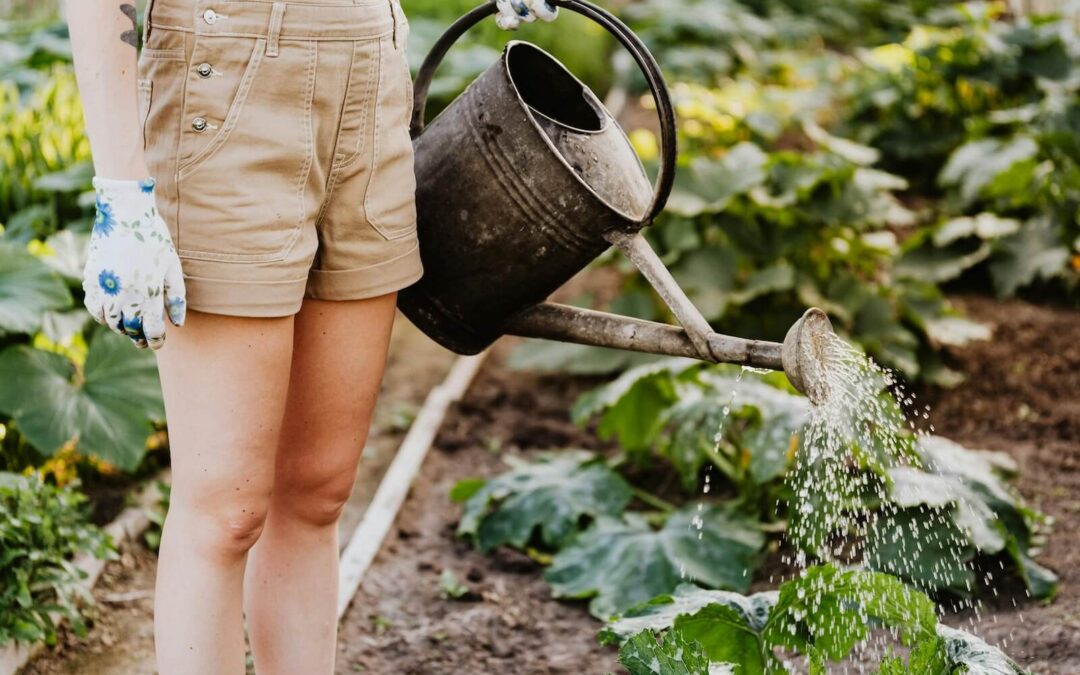Some garden planners can envision a beautiful landscape, sketch it out, and list where certain flowers and plants should go without a single consultation. Others need a little visual inspiration before they can commence with their Colorado landscape design. Whether you’re a seasoned gardener or just beginning to explore your outdoor space’s potential, these landscaping ideas are perfect for enhancing your Colorado backyard.
Elevate Your Landscape
Living in the Rocky Mountains doesn’t automatically mean you have a hilly landscape. Many of us city dwellers could use a little elevation to create interest. You can haul soil into your backyard, frame it with pavers or natural stone, and enjoy a raised bed for a small lawn and/or garden. It can make a dramatic difference.
Materials and Tools: Soil, pavers or natural stones, shovel, wheelbarrow, level, landscape fabric.
Steps:
- Outline the area where you want the raised bed.
- Excavate a few inches of soil to level the base.
- Lay landscape fabric to prevent weeds.
- Frame the area with pavers or stones.
- Fill with high-quality garden soil.
- Plant your chosen flowers or vegetables.
Maintenance Tips: Ensure regular watering and add mulch to retain moisture. Check for soil erosion periodically and adjust the pavers if necessary.
Customization: Adjust the height of the raised bed according to your preference and available space. Incorporate different materials for framing, such as wood or brick, to match your garden’s style.
Environmental Considerations: Use locally sourced soil and stones to reduce environmental impact. Opt for drought-tolerant plants to conserve water.
Local Plant Recommendations: Consider planting Rocky Mountain Penstemon, Blue Flax, or Prairie Sage.
Paver Heaven
Pavers are a wonderful gift to the landscaping world. When you fill the spaces between them with green ground cover, you can create an area that’s exceptionally drought-tolerant and well-draining. Pavers also provide visual interest and can be used as a seating area, dining space, or a relaxing outdoor room for your family.
Materials and Tools: Pavers, ground cover plants (e.g., thyme, sedum), gravel, sand, rake, tamper, level.
Steps:
- Plan the layout and mark the area.
- Excavate to a depth of 4-6 inches.
- Spread gravel and compact it using a tamper.
- Add a layer of sand and level it.
- Lay the pavers in your desired pattern.
- Fill the gaps with soil and plant ground cover.
Maintenance Tips: Weed regularly and trim the ground cover to maintain a neat appearance. Check for and replace any shifted pavers.
Customization: Experiment with different paver shapes, colors, and patterns to suit your aesthetic. Add decorative elements like mosaic tiles or pebbles for extra flair.
Environmental Considerations: Use permeable pavers to enhance water drainage and reduce runoff.
Local Plant Recommendations: Choose ground covers like Creeping Thyme, Sedum, or Ice Plant.
Create an Outdoor Room
With the addition of a fireplace or fire pit, you can increase your home’s square footage. Analyze your space carefully so you can provide appropriate wind blocks, lighting, heat sources, furniture, etc., to make the most of your outdoor room.
Materials and Tools: Fire pit or fireplace, outdoor furniture, outdoor lighting, wind blocks (e.g., screens or hedges), heating lamps (optional).
Steps:
- Select a location with natural wind protection.
- Install the fire pit or fireplace according to manufacturer instructions.
- Arrange furniture to create a cozy seating area.
- Add lighting for ambiance and safety.
- Install wind blocks if needed.
Maintenance Tips: Regularly clean the fire pit or fireplace. Protect furniture from the elements with covers.
Customization: Add outdoor rugs, cushions, and blankets for comfort. Use decorative elements like lanterns or string lights to enhance the ambiance.
Environmental Considerations: Use energy-efficient LED lighting and eco-friendly firewood or gas options.
Integration with Existing Landscapes: Position the outdoor room near your garden or patio to create a seamless extension of your living space.
Design a Pond
A pond or water feature provides soothing sounds, a peaceful area to relax, and a space to grow some water plants. They don’t have to be big — small ponds provide equal enjoyment and require significantly less work.
Materials and Tools: Pond liner, pond pump, rocks, aquatic plants, shovel, level, pond filter.
Steps:
- Choose a location that gets partial sunlight.
- Excavate the area to your desired depth and shape.
- Lay the pond liner and smooth out any wrinkles.
- Install the pond pump and filter.
- Arrange rocks around the edges.
- Fill with water and add aquatic plants.
Maintenance Tips: Regularly clean the pump and filter. Remove debris and check water levels.
Customization: Add a small waterfall or fountain for added interest. Use a variety of rocks and plants to create a natural look.
Environmental Considerations: Use a solar-powered pump to reduce energy use. Choose native aquatic plants to support local wildlife.
Local Plant Recommendations: Include Water Lilies, Cattails, or Horsetail.
Use a Living Wall
There are all kinds of ways to create privacy in your backyard, but we’re fans of the living wall. A vertical garden is stylish, enhances your view, and can be augmented seasonally to retain interest year-round.
Materials and Tools: Trellis or wall-mounted planters, soil, climbing plants or succulents, watering system (drip irrigation recommended).
Steps:
- Install the trellis or planters on a sturdy wall.
- Fill planters with soil.
- Plant climbing plants at the base or succulents in the planters.
- Set up a watering system to ensure even moisture distribution.
Maintenance Tips: Regularly water and trim plants. Check for pests and diseases.
Customization: Mix different types of plants for varied textures and colors. Add decorative elements like fairy lights or small garden ornaments.
Environmental Considerations: Use recycled materials for planters. Opt for drought-resistant plants to conserve water.
Local Plant Recommendations: Consider Virginia Creeper, Clematis, or Succulents.
Integrating New Features with Existing Landscapes
When adding new elements to your backyard, it’s crucial to ensure they complement your existing landscape. Consider the overall layout, plant types, and color schemes already in place. For instance, matching the stone of your raised beds with existing pathways or using similar plants in your living wall that are already thriving in your garden can create a harmonious look. Consulting with a local gardening expert can provide valuable insights and help tailor your design to fit seamlessly with your current setup.
As always, you can get in touch with Lifescape Colorado should you need any assistance along the way. We can help you design, build, and maintain your masterpiece all year long.

